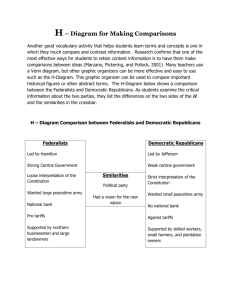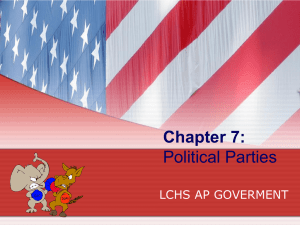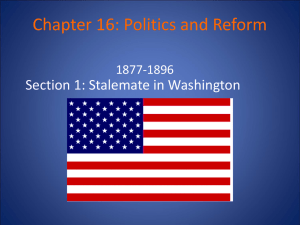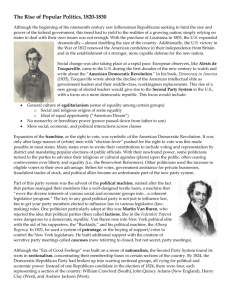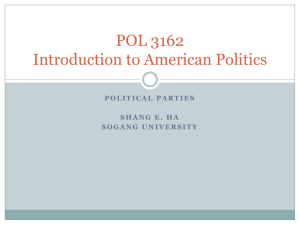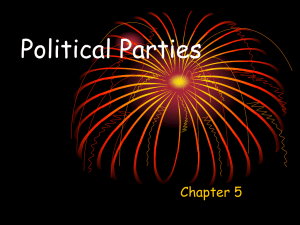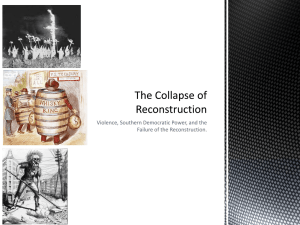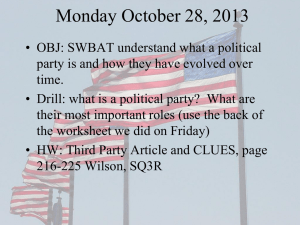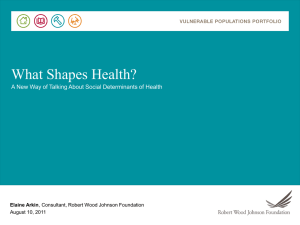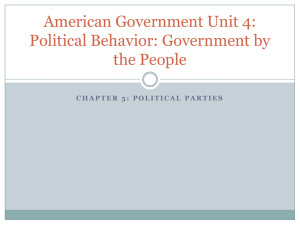PowerPoint Presentation - Everett Public Schools
advertisement
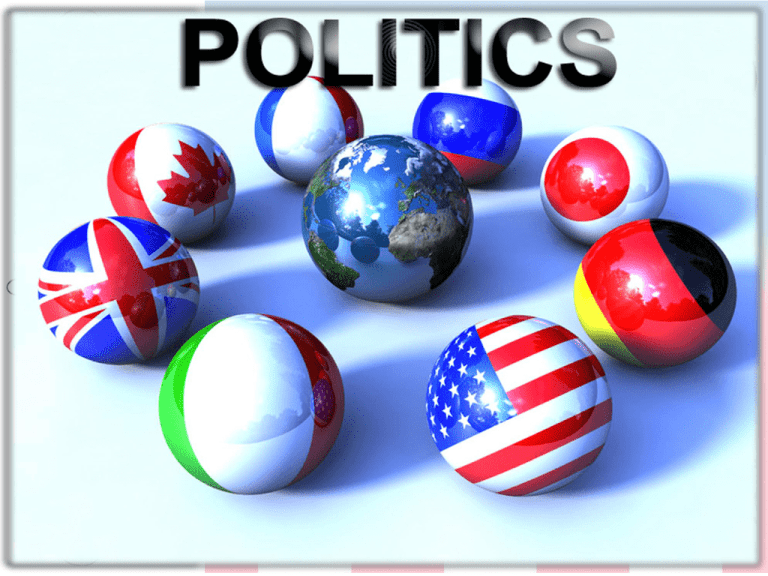
Introduction A political party is a group of voters organized to support certain public policies. The aim of a political party is to elect officials who will try to carry out the party's policies. When people in a democracy disagree about what the government should do, voters express their opinions by voting for the candidates that most closely reflect their views. Political parties provide a way for voters to easily identify a candidate's positions. Political parties may be large or small, national or local. Large political parties generally have millions of members and supporters. In democratic election campaigns, parties compete freely for votes. How they Began Political parties as we know them did not begin to develop until the late 1600's. In ancient Rome, the Senate of the had two groups that represented people with different interests — the Patricians and the Plebeians. The Patricians represented noble families. The Plebeians represented the merchants and the middle class. For many centuries after the fall of Rome, the people of Europe had little voice in politics. Thus there were no true political parties. Political parties developed as representative assemblies gained power. In England, this change began in the late 1600’s. English politics In 1678, a rumor spread through England that Roman Catholics were plotting to kill King Charles II and give the throne to Charles‘ brother, James, Duke of York (who was a Roman Catholic). To King Charles II, Parliament seemed to be challenging royal authority, and he struck back by dissolving Parliament. This caused people to take sides for or against the king. Those who urged the king to call a new Parliament were called Petitioners. Those who backed the king's deed were called Abhorrers because they abhorred any attempt to control the king's actions. English politics Before long the two factions took on other names. Petitioners were called Whigs. "Whig" was an old term for Scottish Presbyterians who opposed the government. The king's supporters were called Tories. "Tory" was originally a name given to Irish Roman Catholics who had suffered under Protestant rule. The basic difference between Whigs and Tories in the 1600's was their view of what government should do and how strong it should be. Tories wanted rule by a strong king. Whigs wanted ordinary people to have more rights and gain more control of their government. US politics There will always be people who disagree philosophically about how the government should function and how much control they should have. We first saw this with the differences of opinions within the colonies and how they should be run. We then saw the conflict with England and the Loyalist and Patriots. Once the Articles of Confederation were written we saw that they provided the states with all the power. The Central Government had very limited authority. When it became obvious that the Articles of Confederation were not effective the state representatives came together in the Constitutional Convention to establish a new form of government that provided a stronger Central Government, thus the Constitution. US politics However, the Constitution was divisive. The group of representatives who supported a stronger Central Government with the ultimate control and power were the Federalists. Those who opposed the Constitution and supported a government with more local state control were the Anti-Federalists. Next we can see that as George Washington selected his cabinet, there was immediate division within the group. Alexander Hamilton is appointed at the first Secretary of Treasury and Thomas Jefferson as the first Secretary of State. Immediately there is a controversy regarding the Bank and how the Constitution will be interpreted. US politics Hamilton representing the Federalist point of view believes in a strong Central government and assumes a loose interpretation of the Constitution. Hamilton and the Federalists also support reestablishing ties with England as a means of creating a source of income through trade and taxes. Thomas Jefferson and James Madison on the other hand represent the Democratic – Republicans. They believe in a very strict interpretation of the Constitution. They did not agree that the Central government had the authority to establish a National Bank. They also felt an obligation to support France in their Revolution and not England. Evolution of the US political parties The Federalist v. the Anti Federalists The Federalists v. the Democratic Republicans A Jackson changes the Democratic Republicans become the Democrats The Federalists team up with people opposed to Jackson and form the the National Republicans or the Whig Party. The 1850’s brought a division in the country with the Civil War and as such sectionalism drew people into different political groups. The pro slavery south formed the Democratic Party and the North assumed the position of a newly formed Republican Party. Democrats and Republicans The defeat of the Southern Confederacy in the Civil War weakened the Democrats. For many years the Republicans were the major party. They favored business interests and high tariffs (taxes on imports). The Democrats supported free trade and attracted farmers and the immigrants who poured into the country after the Civil War. The two major parties were not so deeply divided again until the 1930's. At that time the Great Depression struck the country. The election of 1932 brought in Franklin D. Roosevelt and his New Deal programs. Roosevelt Democrats thought that the federal government must actively help people who had been hurt by the Depression. Under the New Deal the government passed economic relief measures, social security, laws helping unions, and other bills. Republicans thought the government was taking too much power and moving the country toward a welfare state. They fought against governmental interference with business. Democrats and Republicans Today both parties agree in general on social security, unemployment insurance, basic foreign policy, and civil rights. The issues on which they disagree often are not goals so much as means: how best to keep the economy growing, protect the environment, and maintain a strong national defense. In general, Republicans tend to oppose government programs as solutions to national problems. Democrats tend to believe that government can and should act for good. However, the parties' views on government's role often depend on the specific issue or program in question.
